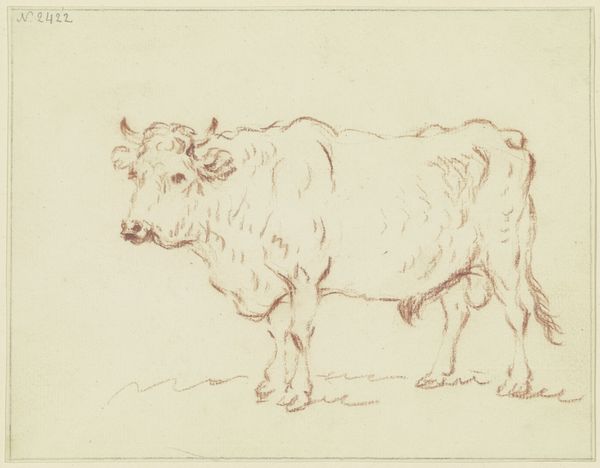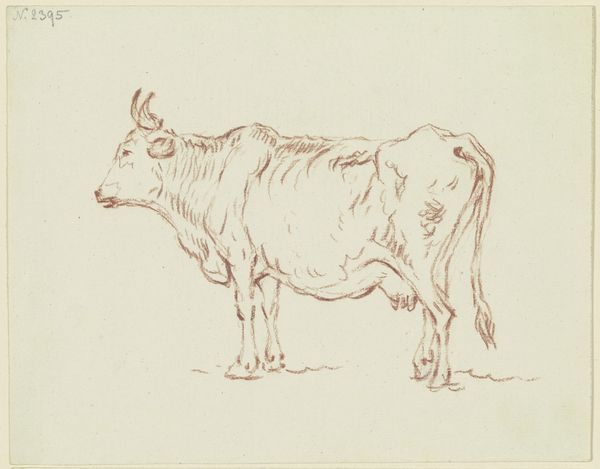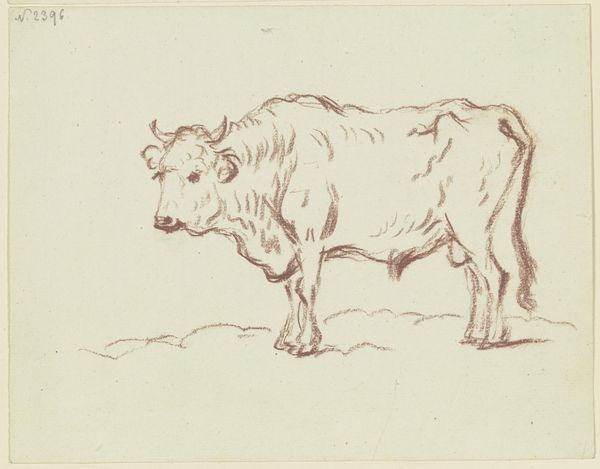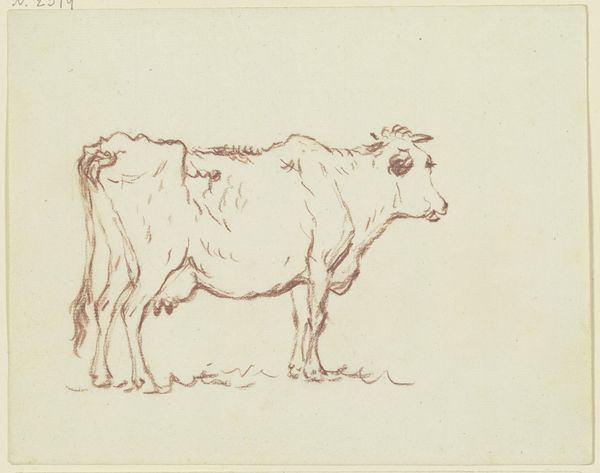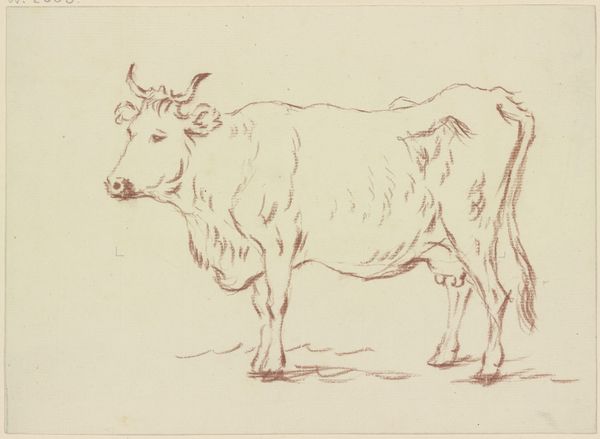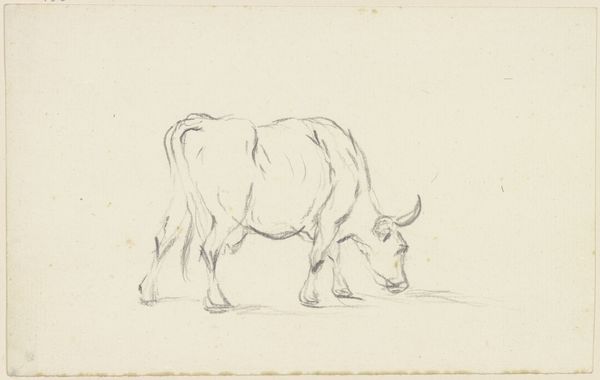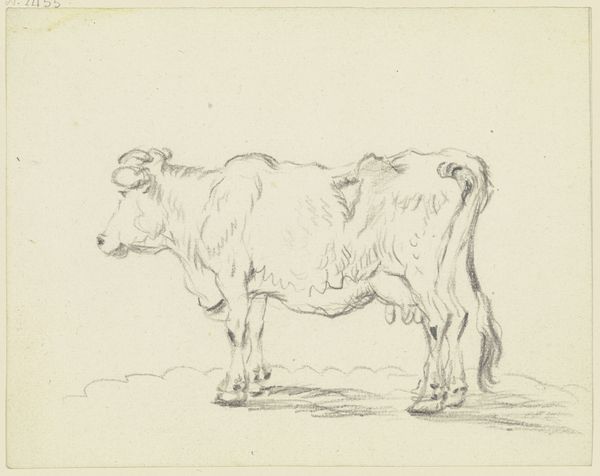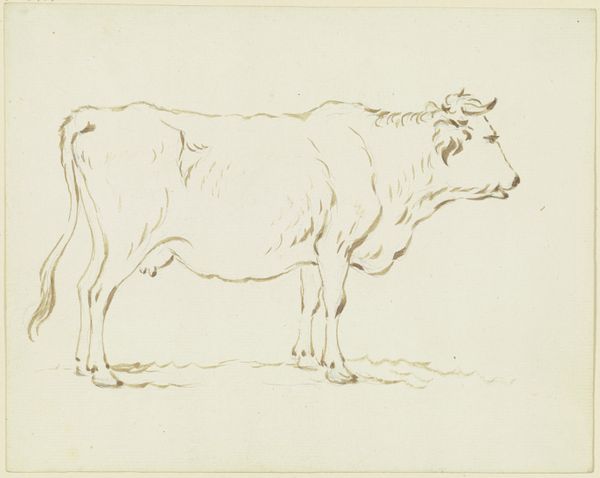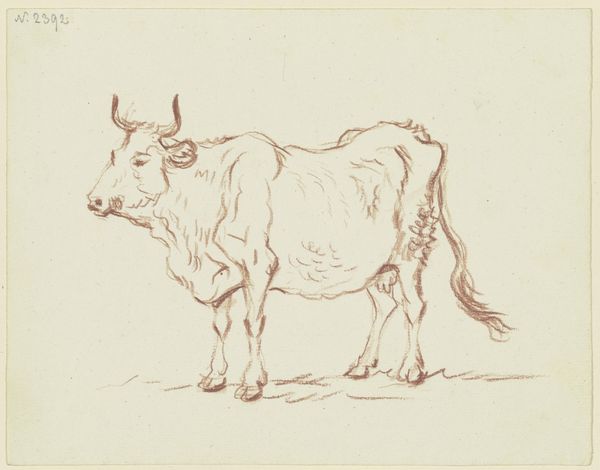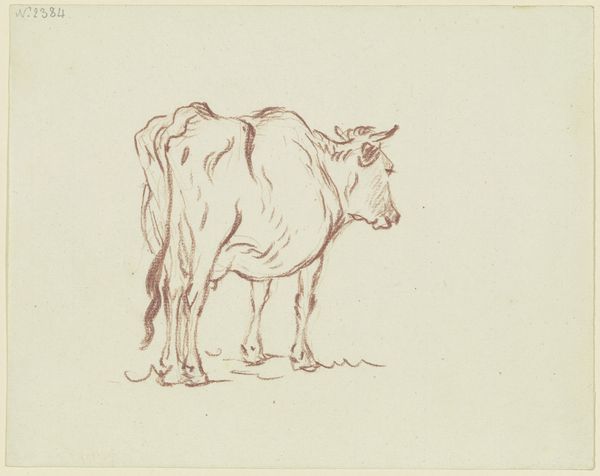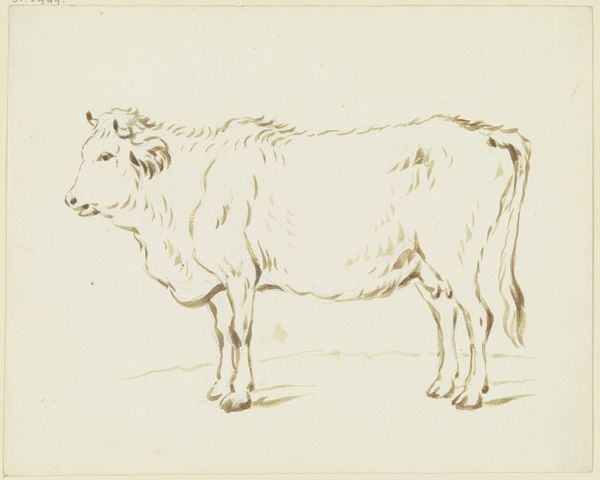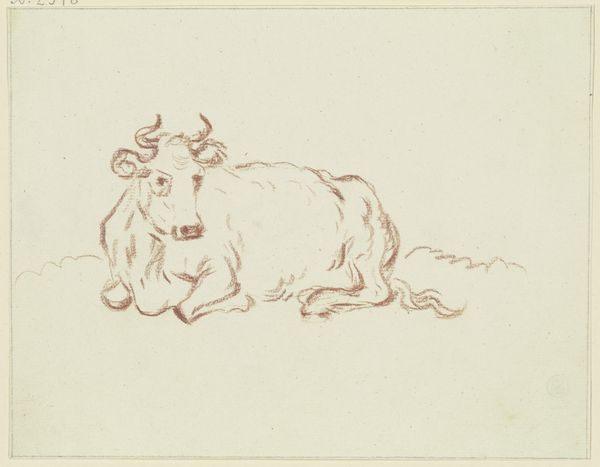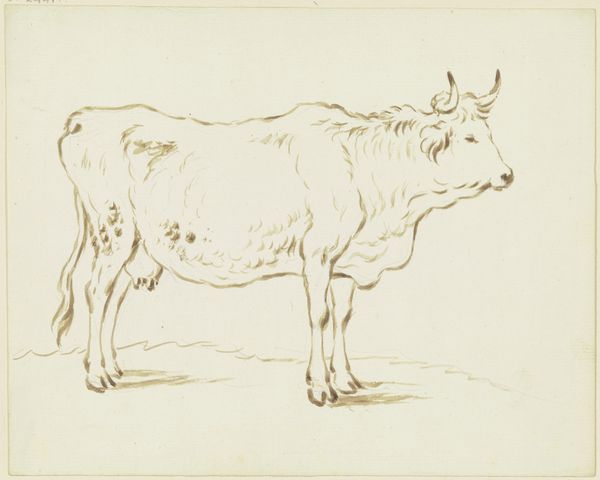
drawing, dry-media, charcoal
#
drawing
#
animal
#
landscape
#
figuration
#
dry-media
#
romanticism
#
15_18th-century
#
charcoal
Copyright: Public Domain
Editor: So, this drawing is titled "Stehender Ochse nach rechts," or "Standing Ox Facing Right," by Friedrich Wilhelm Hirt. It looks like a charcoal drawing. The ox appears calm, almost contemplative. What strikes you about this piece? Curator: This drawing provides a powerful lens through which we can examine 18th-century social and agricultural dynamics. The depiction of the ox, a beast of burden, is loaded with socio-economic meaning. How might this portrayal of an animal connect to broader narratives of labor, class, and even nascent capitalism at the time? Editor: I hadn't considered the economic aspect. I was more focused on the animal itself, but the labor connection is really interesting. Is there something in the style that points to this connection, or is it more about the choice of subject matter? Curator: It's both. The Romanticism style, with its focus on the individual and on nature, is here applied to… well, not exactly to an individual person, but to an individual animal. It almost elevates it above its assigned societal role. This connects to philosophies exploring our relationship to the natural world and critiques of agrarian labor structures that dehumanized both human and animal subjects. Can you see echoes of contemporary debates about animal rights and fair labor practices in this seemingly simple image? Editor: I do now. It’s a pretty radical statement for its time, when you put it that way. I initially just saw a drawing of an ox. Curator: Exactly. Art invites us to make connections between what *is* and what *could be*. And, hopefully, between art history and today's socio-political challenges. Editor: Thanks. I'll never look at a farm animal drawing the same way again.
Comments
No comments
Be the first to comment and join the conversation on the ultimate creative platform.
